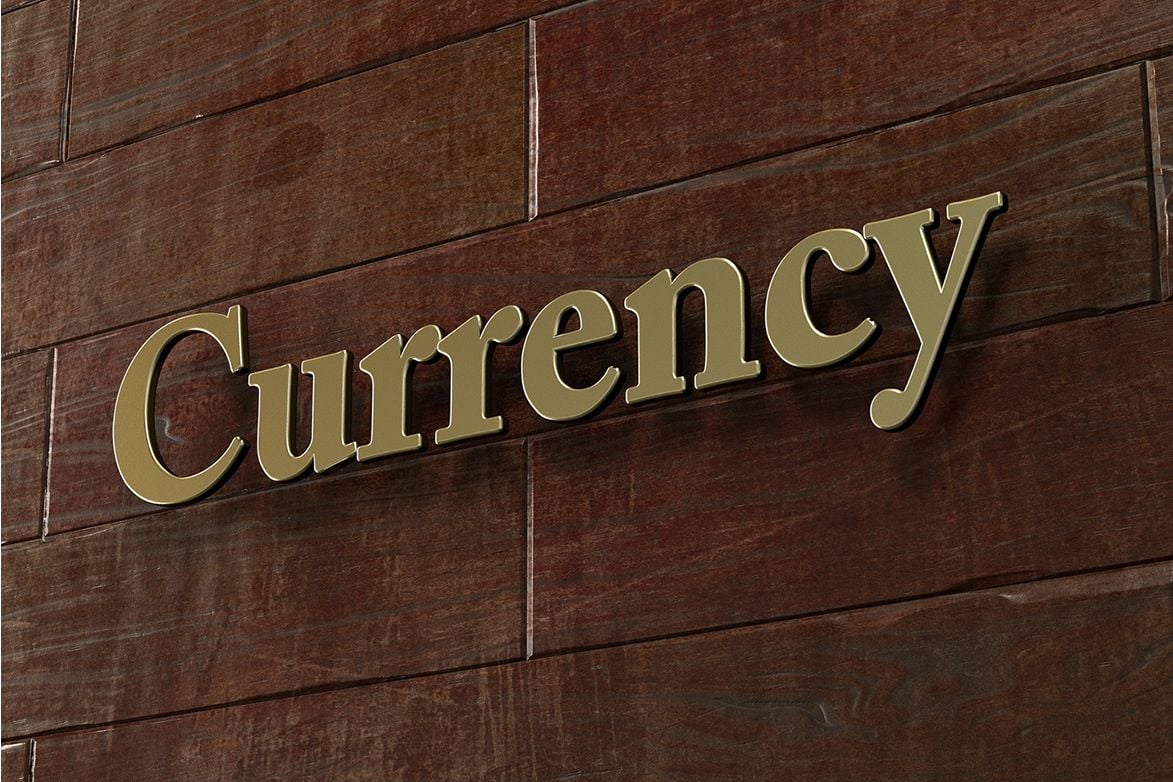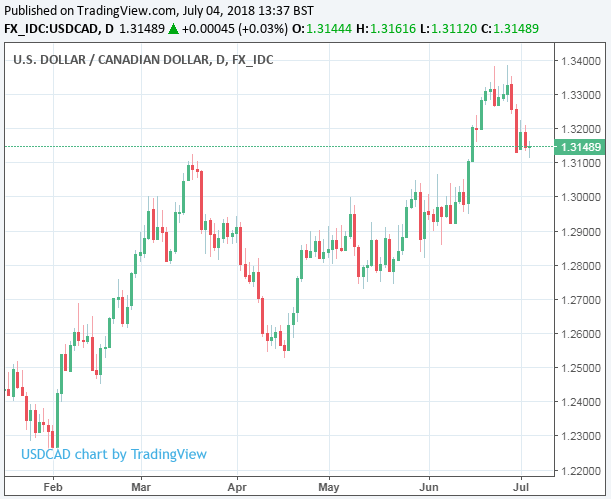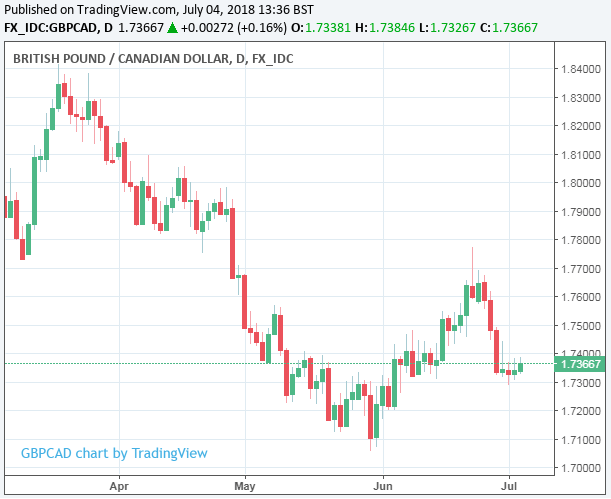Sell Canadian Dollar Strength, the Good News is in the Price: TD Securities
- Written by: James Skinner
- CAD extends gains over USD and GBP as market looks for BoC rate hike.
- But July 11 will be final BoC rate hike for 2018, say CIBC, TD Securities.
- USD/CAD set to rise further in 2018 while GBP/CAD could also extend gains.

© Chris Titze Imaging, Adobe Stock
The Canadian Dollar has arrested a month-long sell-off relative to the Pound and US Dollar, rising by a fraction against both rival currencies during the five days to Wednesday, 04, July, although analysts are warning the Loonie's current period of respite will soon give way to renewed losses.
Canada's Loonie is trading 1.4% higher against the Dollar and is up 0.7% against the Pound this week after a better-than-expected GDP report released on June 29 assuaged fears of an extended slowdown in the Canadian economy and cemented market expectations of a Bank of Canada interest rate rise on Wednesday, 11 July.
And some are hoping this performance continues.
"USD/CAD retains a softer undertone. The market has reached our short-term bear target (1.3145) relatively easily but has struggled to extend lower since Friday. The early 2018 high at 1.3125 is providing some underpinning for the USD here but broader trends suggest to us that the USD remains at risk of further losses. We note that daily oscillators are still showing the USD is correcting from overbought levels," says Shaun Osborne, chief FX strategist at Toronto-based Scotiabank.

Above: USD/CAD rate shown at daily intervals.
Canada's economy grew by 0.1% during the April month, down from 0.3% in March, when markets had been looking for it to stall during the period. This puts the economy on track to expand at an annualised pace of between 2% and 2.5% during the second quarter overall, according to some estimates, neutering earlier concerns that a firts-quarter slowdown would extend into the summer months.
The data came less than two weeks away from the July Bank of Canada meeting in which markets are betting the Bank will decide to raise its interest rate for the fourth time in the last 12 months, taking the cash rate up to 1.5%. This should, in theory, be a supportive development for the Loonie given the Federal Reserve is the only other G10 central bank to have a clear path toward higher interest rates ahead of it.
"GBPCAD is little changed on the day but the cross also closed lower on Friday, completing a bearish weekly reversal (“engulfing line”) on the candle chart. Weakness below short-term channel support plus a low close overall last week suggest that the GBP’s four week advance is rolling over. We sport support at 1.7305 still (holding for now) but we think the pound may be at risk of retesting major supports around the 1.7050/1.71 area," Osborne adds.

Above: Pound-to-Canadian-Dollar rate shown at daily intervals.
Advertisement
Get up to 5% more foreign exchange by using a specialist provider to get closer to the real market rate and avoid the gaping spreads charged by your bank when providing currency. Learn more here
Sell Canadian Dollar Strength: TD Securities
However, despite an apparently improved prospect of a BoC rate hike next week, some analysts say the Canadian Dollar will soon face renewed losses.
"The CAD has experienced a relief rally thanks to the combination of a decent GDP report and Governor Poloz's suggestion that policy may still need to calibrate higher later this month. With the curve repriced for this outcome, a lot of good news now appears to be priced in the CAD," Mark McCormick, North American head of FX strategy at Toronto-based TD Securities. "This has us focused on the downside, with 1.3125/50 acting as an appealing zone for dip interest in USD/CAD with an eye towards a topside extension towards 1.35 in the coming weeks."
The so called "trade war" between the US, China and more recently, the European Union, has been a hot button issue for all financial markets in recent months but particularly for currencies and the Canadian Dollar.
It is relevant for the Loonie because Canada is also in the firing line when it comes to trade relations with its southern neighbour.
Officials from both sides of the border have been attempting, without success, to renegotiate the North American Free Trade Agreement for nearly a year now.
TD Securities analysts have previously estimated that a US withdrawal from NAFTA could see the Canadian Dollar fall by 20% as markets would be forced to mark down their expectations for Canadian economic growth and interest rates over the longer term.
"Trade War" in Focus
Now President Trump is pursuing restrictive legislation to govern Chinese investments into the United States and has recently ordered that a range of tariffs be levied against imports of more than $250 billion in American imports of Chinese goods.
The move has drawn retaliation and threats of even further reciprocal measures from the Chinese, which all comes on top of earlier White House tariffs on imports of steel and aluminium into the United States from across the globe, including Canada and the European Union.
The EU has since responded to those with its own levies on US motorcycles, jeans and whiskey, drawing threats of even more tariffs from the White House, this time targeting the mighty European automotive sector. This is also a problem for the Loonie because many European cars sold in the US are built Mexico, and many trucks in Canada, and are then shipped across the border into the US.
"The economic damage would then depend on a host of other what-ifs," says Avery Shenfeld, chief economist at Toronto-based CIBC Capital Markets. "The longer the tariffs are in place, the greater will be the opportunity to add capacity within the US at the expense of Canada. That said, time will also allow the Canadian economy to adjust with a much weaker exchange rate, and a lower path for interest rates, than would otherwise have been the case."
The US is using a section 232 investigation under the Trade Expansion Act 1962 to investigate whether the current automotive landscape presents a threat to national security. This investigation is the same mechanism used by the Trump administration to impose tariffs on metals imports from the EU, Canada and Mexico but could take up to seven months to arrive at a determination.
"A delayed tariff would be a sword of Damocles hanging over the head of the Canadian economy. That will be enough to meet three Trumpian aims: to pressure America’s partners into a more US-tilted trade deal, to instill uncertainty that favours building the next plant in the US, and to demonstrate a toughness on trade to the voting base," Shenfeld adds.
Shenfeld and the CIBC team say the Bank of Canada will raise its interest rate at its Wednesday 11, July meeting but that this will be the final hike until 2019, which will come as disappointment for a market that it still looking for another additional rate rise before the year is out.
They also forecast the USD/CAD rate will rise from 1.3150 Wednesday to 1.34 before year end and that the Pound-to-Canadian-Dollar rate will increase from 1.73 Wednesday to 1.76 in time for year-end.
Advertisement
Get up to 5% more foreign exchange by using a specialist provider to get closer to the real market rate and avoid the gaping spreads charged by your bank when providing currency. Learn more here




